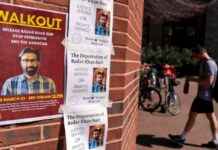Jaywalking — a common practice of crossing the street outside designated areas or against traffic signals — has been officially legalized in New York City. The City Council passed legislation that was enacted into law over the weekend after Mayor Eric Adams decided not to sign or veto it within 30 days.
Council Member Mercedes Narcisse, who sponsored the bill, highlighted the racial disparities in jaywalking enforcement, with over 90% of tickets issued last year going to Black and Latino individuals. She emphasized that jaywalking is a widespread behavior among New Yorkers trying to reach their destinations, arguing that penalizing such everyday movements, especially when it disproportionately affects communities of color, is unjust.
The new law permits pedestrians to cross roadways at any point, allowing them to jaywalk without violating the city’s administrative code. However, it emphasizes that pedestrians crossing outside crosswalks must yield to other vehicles with the right of way. Liz Garcia, a spokesperson for Mayor Adams, underscored the risks associated with crossing against traffic signals and mid-block, cautioning that individuals may still be held liable for accidents resulting from jaywalking.
While jaywalking has been decriminalized in various cities and states across the country in recent years, America Walks, a Seattle-based organization, advocates for a focus on street design and vehicle safety measures rather than jaywalking laws. The term “jaywalking” originated in the early 20th century as a derogatory reference to rural individuals.
In New York City, where pedestrian-motorist conflicts are common, the jaywalking law had been enforced since 1958, carrying a penalty of up to $250. The Legal Aid Society welcomed the new legislation, stating that police have historically exploited jaywalking violations as a pretext for profiling and harassment, particularly targeting people of color.
The organization urged the Adams Administration and City Council to reconsider outdated laws that serve no public safety purpose and perpetuate unnecessary entanglement in the criminal justice system. While the police department refrained from commenting on the new law, it reiterated its commitment to enhancing traffic safety and preventing collisions resulting in injuries or fatalities, in collaboration with the NYC Department of Transportation.
Council Member Narcisse emphasized that law enforcement officers have expressed a preference for focusing on more critical policing matters rather than issuing jaywalking tickets. By eliminating penalties for jaywalking, she believes that police resources can be redirected towards addressing more pressing issues affecting communities.
In conclusion, the legalization of jaywalking in New York City marks a significant shift in pedestrian regulations, aiming to promote equitable treatment and enhance police-community relations. As the city adapts to this new law, the focus remains on ensuring the safety of all road users through comprehensive traffic management strategies.
































